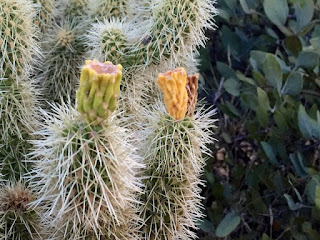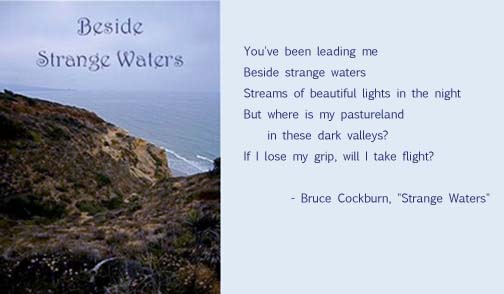 |
| Cholla Blossoms, McDowell Mountain Regional Park. © 2017 Tina Quinn Durham |
Today, people use tongs to harvest the buds, and clean off the spines with a screen box, rolling the buds across the screen with a whisk broom, and then pulling off the remaining spines with tweezers. This is definitely not fast food!
Cholla buds could be cooked fresh, or dried and cooked later. But raw cholla buds contain oxalic acid which irritates the throat of any human unfortunate enough to eat a freshly picked cholla bud. Fifteen minutes of boiling will remove the acid, and then the cooked buds can be added to other dishes.
However, javalina, jack rabbits and pack rats can all digest oxalic acid, and so eat the fruit of the cholla and the prickly pear without damaging their esophagi. Which is fortunate for them, because they don’t have access to a kitchen!
Works Cited
Acoba, Elana. “It's Harvest Time for Cholla Buds, a Subtle, Versatile Native Food.” Arizona Daily Star, Tucson.com, 8 Apr. 2012, tucson.com/lifestyles/home-and-garden/it-s-harvest-time-for-cholla-buds-a-subtle-versatile/article_c9e74554-3c65-5976-ac29-bd3668399c5a.html.
Engols, Kimberly, and Season Eggleston. The Incredible Edible Desert. Ecology & Evolutionary Biology Dept., University of Arizona, 2010, eebweb.arizona.edu.
Tohona O'odham Community Action. “Ciolim: Cholla Cactus Buds.” Tocaonline.org, Tohono O'odham Community Action, ND, www.tocaonline.org/ciolim.html.

No comments:
Post a Comment